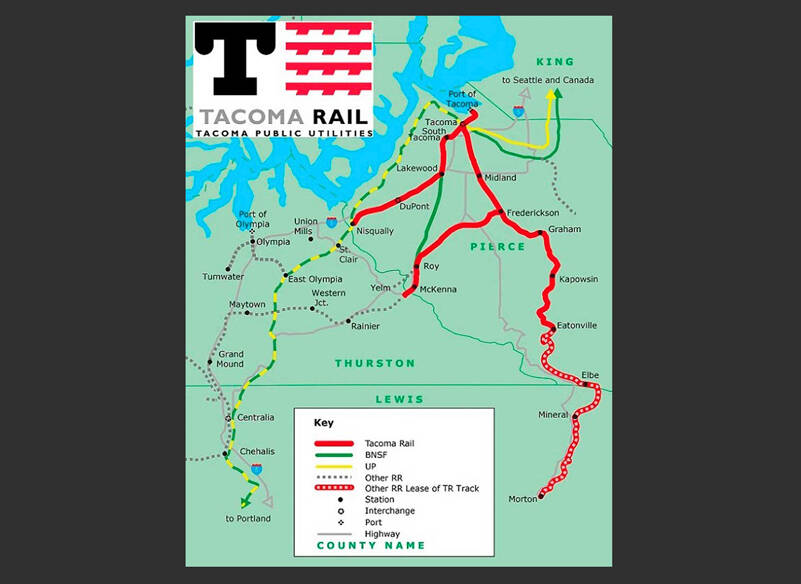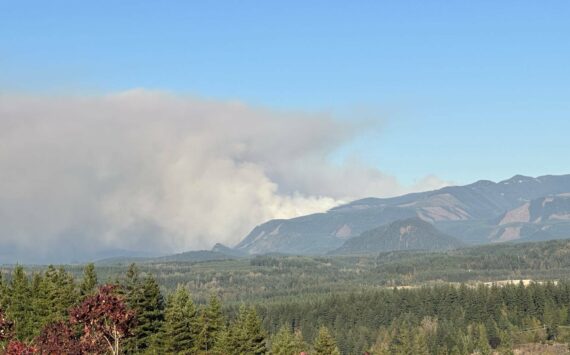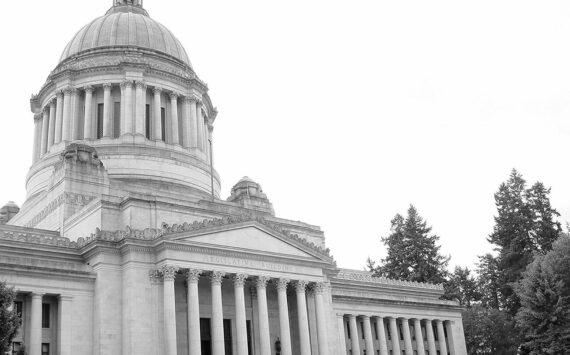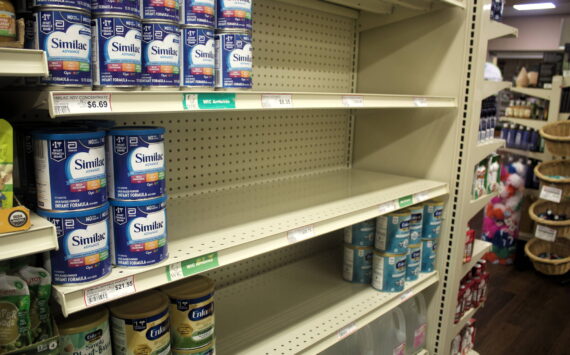By Morf Morford, Tacoma Daily Index
If you’ve seen the film O Brother, Where Art Thou? you might have something like an inkling, in more ways than one, as to where we are – and where we are going.
Loosely (VERY loosely) based on Homer’s The Odyssey, this movie is essentially one darn thing after another.
For most of us, the ramblings and intersections with chain gangs, sharecropper cottages, cotton fields, populist politicians, river baptisms, hobos on freight trains, patent medicines, low-watt community radio stations and Klan rallies is as alien, if not mythical as any fictional if not fantastical culture – and yet, few journeys could be more deeply rooted in American history. As are the main characters.
With delusion more compelling than sense, pretension masquerading as intelligence and naïveté ruling over all, the three characters embark on a road trip of quasi-redemption and discovery. With multiple story strands, and (mostly) good intentions, the characters do their best (sort of) to reclaim, restore and, perhaps most all, find home. And, for a time, these three befuddled, semi-charmimg nitwits, with their naive and (mostly) good intentions, personified at least one strand of our national identity.
If O Brother, Where Art Thou? puzzled most viewers, maybe it was supposed to.
For whatever reason, I’ve been thinking about that movie in the context of news and discussions about mass transit in America lately. With train derailings, problems with state and local ferries and a few more-than-questionable business dealings, our mass transit system is as stalled, bungled, subject to investigation/corruption and just plain inept as any publicly financed project could be.
Tacoma Rail
Who of us knew that Tacoma Public Utilities is probably the only utility in the country that owns and operates a railroad?
It all began in 1927 with a passenger service that shuttled people to and from work in the Port of Tacoma.
Tacoma Rail currently moves freight, but no passengers, through the Port of Tacoma. And beyond. Far beyond.
Tacoma Rail connects the Port of Tacoma with Nisqually, McKenna and the area around Mount Rainier (Eatonville Elbe, Mineral and Morton).
A connection with buses or shuttles from Elbe to Mount Rainier National Park could be an astounding tourist attraction – and one few, if any cities could offer. A trip like this could easily be affordable, environmentally friendly – and an adventure few areas could even imagine offering.
As I was writing this, the Tacoma City Council voted to sell the Mountain Line to a private company.
Tacoma Rail has two distinct lines, each publicly owned. Tacoma Municipal Beltline Railway (TMBL), doing business as Tacoma Rail, is owned by Tacoma Public Utilities which is itself a division of the City of Tacoma. Tacoma Rail is a provider to rail shippers and receivers in conjunction with mainline railroads BNSF and Union Pacific. Tacoma Rail Mountain Division (TRMW) is owned by the City of Tacoma and managed by the Division of Public Works.
The city barely used the Mountain Line and perhaps, just maybe, it could be used as a rail line for some of us to get to the park. And, if it ever abandoned, it could be converted to a trail. To see existing rails to trails conversions in Washington, look here.
Sound Transit, anyone?
At the end of February Sound Transit announced another delay for the Tacoma Dome Link Extension, pushing the start of service connecting us to the larger system to 2035. The Tacoma connection was first approved in 2016 and scheduled to open in 2030. And then 2032. And now 2035. Pierce County residents have been paying Sound Transit taxes for years already.
As many of us know, a transit system has been an elusive figure on our horizon for decades, if not longer. You can see a Seattle-centric history of our often blundering route to adequate transit here.
Heading North
According to recent surveys, about 100,000 Pierce County residents make their way north – each day – for work. And for much, if not all of the day, traffic is somewhere between horrible and impassable.
In fact if you observe I-5 traffic on any given day (and if you find yourself on I-5, you will have plenty of time to observe other drivers) you will notice that virtually every car has one occupant. That means that approximately 100,000 vehicles make their way from Pierce County to King County. If only one tenth of those workers went by rail, that would be 10,000 fewer cars on the freeway and 10,000 more parking places in King County.
Whatever your position on private vehicles versus mass transit, the one thing we can all agree on is that the system we have now is not working. It is expensive, dangerous, inefficient and inadequate.
If you travel north on I-5, you can see active construction on the Sound Transit line as far north as Lynnwood. You can also see crews at work and projects in motion outside of Federal Way. But Tacoma? Not so much.
Among many other ironies is that fact that what we know as the Tacoma Link was the very first section of Sound Transit to become operational. It looks like our connection to the totality of Sound Transit will be the final, completing north-south link.
Track geometry in Tacoma
The Hilltop Tacoma Link Extension, due to open in early 2023, has met with multiple delays including incorrect installation of the rails and problems with track geometry (whatever that might be). So that leg too, is far behind schedule, with an ever more uncertain and distant operational date.
To put it mildly, 2035 is a long time from now. As of 2023, that is 12 years away. That means the current six-year-olds of 2023 will be able to vote. And those currently in their mid-forties will be approaching their sixties. And many of us, for a variety of reasons, won’t see it at all. But we have been paying for it.
Where rails don’t go
Unlike most regions, our state and (Pierce County) has regions where rails can’t go; islands. This is why we have ferries. Which are, or at least used to be, reliable.
Like our trains, locally and nationally, ferries, for their own reasons, have been having debilitating problems, that, like our rail (or weather) challenges and difficulties are only going to get worse. Much worse.
In the short time since our last article on ferries, much has happened. Which is a polite way of saying that our ferries are far worse than any of us could imagined even a month ago.
There’s an assumption that history happens slowly and gradually, that social changes and public attitudes and policies change incrementally and accumulate over time. The truth is that changes happen rapidly – usually when we aren’t paying attention.
One example is our ferry system. Ferries are expensive and complicated – and take specifically trained staff to operate them. And local and state ferries are besieged by problems in every one of those areas.
Short staffing and mechanical problems are a huge problem – especially in the setting of a rapidly aging workforce and an equally aging ferry system. Replacement parts – and workers – are getting harder and harder to find.
You’d think that physically getting from one place to another in the 2020s would be easier than literally a hundred years ago. Or even two years ago.
Since 1922 a ferry ran on a daily basis from Anacortes (Washington, USA) to Sidney (British Columbia, Canada). Until now. And it is unlikely to resume before at least 2030. You can see details and updates here.
It’s not in The Constitution, but it’s a premise so obvious that the framers of our founding documents didn’t even think about it; the freedom to travel – especially in one’s own state and county – should not be restricted.
Our ferry systems, local and state, are woven into local and state jurisdictions and budgets. Just as we all pay for highways and schools, we all contribute to the maintenance and operation of our ferries. In other words, taxes (and in some cases, user fees) are what keeps our ferries (and a few bridges and toll lanes) in use for all of us, whether we use them or not.
Unrestricted, reliable and affordable travel is the ultimate “given” in our society. The idea of a “road trip” could not be more American in its lore, legend and set of assumptions. But, at the risk of voicing the ultimate American heresy, not everyone has, or even wants to rely on individually owned vehicles for even the most basic transportation, a multi-faceted transportation for those of all ages, incomes, skill levels and abilities should be the most basic of foundations for a free and open society.
And, of course, for those who have chosen the island life, or some approximation to it, access is far more than a convenience – it can be a literal lifeline.
It’s difficult to imagine a right more basic than the right to move freely and easily within our own state. Our variegated terrain makes it much more complicated – and of course, vastly more interesting.





